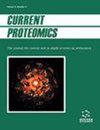PCM1: A Potential Prognostic Biomarker Correlated with Immune Infiltration in Lung Adenocarcinoma
IF 0.5
4区 生物学
Q4 BIOCHEMICAL RESEARCH METHODS
引用次数: 0
Abstract
Background: Recent studies have validated the role of Pericentriolar Material 1 (PCM1) in several malignant tumour cell lines, but its specific biological function in lung adenocarcinoma (LUAD) remains unclear. Objective: To address this gap, this study analyzed 411 LUAD and control samples to evaluate the prognostic value of PCM1 using Cox regression analysis. objective: To address this gap, this study analyzed 411 LUAD and control samples to evaluate the prognostic value of PCM1 using Cox regression analysis. Methods: Multiple genes co-expressed with PCM1 were also analyzed to investigate the biological processes and roles involved in PCM1. An endogenous competitive network with PCM1 as the key gene was constructed to uncover its regulatory and competitive relationships in LUAD. The study further explored the immunological characteristics of PCM1 in different expression groups based on immune infiltration analysis. Results: These findings indicated that higher PCM1 expression levels were associated with better survival prognoses, possibly due to its antagonistic effects on RHOC. Immunological infiltration analysis revealed a significant correlation between PCM1 and various immune cell infiltration levels, including CD4+ T cells, naïve B cells, M2 macrophages, and mast cells. However, there was no significant relationship between PCM1 and MSI, TMB, or stemness, although it was positively correlated with m6A genes. Patients with lower PCM1 expression responded better to CTLA-4 therapy. The study also estimated that some chemotherapeutic and targeted agents might be effective in treating patients with high PCM1 levels. PCM1 was mainly expressed in the cytoplasmic and membranous structures. Conclusion: PCM1 shows potential as a prognostic biomarker for LUAD due to its strong correlation with immune cell infiltration and its ability to enhance anticancer treatment sensitivity. other: No.PCM1:与肺腺癌免疫浸润相关的潜在预后生物标记物
背景:最近的研究验证了肺泡周围物质 1(PCM1)在几种恶性肿瘤细胞系中的作用,但其在肺腺癌(LUAD)中的具体生物学功能仍不清楚。研究目的针对这一空白,本研究分析了 411 例 LUAD 和对照样本,采用 Cox 回归分析评估 PCM1 的预后价值:为了填补这一空白,本研究分析了 411 份 LUAD 和对照样本,利用 Cox 回归分析评估 PCM1 的预后价值。方法还分析了与 PCM1 共表达的多个基因,以研究 PCM1 所涉及的生物学过程和作用。构建了以 PCM1 为关键基因的内源性竞争网络,以揭示其在 LUAD 中的调控和竞争关系。研究基于免疫浸润分析进一步探讨了 PCM1 在不同表达组中的免疫学特征。结果这些研究结果表明,PCM1 表达水平越高,生存预后越好,这可能是由于它对 RHOC 有拮抗作用。免疫浸润分析表明,PCM1 与各种免疫细胞浸润水平(包括 CD4+ T 细胞、幼稚 B 细胞、M2 巨噬细胞和肥大细胞)之间存在显著相关性。不过,PCM1 与 MSI、TMB 或干性无明显关系,但与 m6A 基因呈正相关。PCM1表达较低的患者对CTLA-4疗法的反应较好。研究还估计,一些化疗药物和靶向药物对治疗PCM1水平较高的患者可能有效。PCM1 主要在细胞质和膜结构中表达。结论PCM1 与免疫细胞浸润密切相关,并能提高抗癌治疗的敏感性,因此有可能成为 LUAD 的预后生物标志物:无
本文章由计算机程序翻译,如有差异,请以英文原文为准。
求助全文
约1分钟内获得全文
求助全文
来源期刊

Current Proteomics
BIOCHEMICAL RESEARCH METHODS-BIOCHEMISTRY & MOLECULAR BIOLOGY
CiteScore
1.60
自引率
0.00%
发文量
25
审稿时长
>0 weeks
期刊介绍:
Research in the emerging field of proteomics is growing at an extremely rapid rate. The principal aim of Current Proteomics is to publish well-timed in-depth/mini review articles in this fast-expanding area on topics relevant and significant to the development of proteomics. Current Proteomics is an essential journal for everyone involved in proteomics and related fields in both academia and industry.
Current Proteomics publishes in-depth/mini review articles in all aspects of the fast-expanding field of proteomics. All areas of proteomics are covered together with the methodology, software, databases, technological advances and applications of proteomics, including functional proteomics. Diverse technologies covered include but are not limited to:
Protein separation and characterization techniques
2-D gel electrophoresis and image analysis
Techniques for protein expression profiling including mass spectrometry-based methods and algorithms for correlative database searching
Determination of co-translational and post- translational modification of proteins
Protein/peptide microarrays
Biomolecular interaction analysis
Analysis of protein complexes
Yeast two-hybrid projects
Protein-protein interaction (protein interactome) pathways and cell signaling networks
Systems biology
Proteome informatics (bioinformatics)
Knowledge integration and management tools
High-throughput protein structural studies (using mass spectrometry, nuclear magnetic resonance and X-ray crystallography)
High-throughput computational methods for protein 3-D structure as well as function determination
Robotics, nanotechnology, and microfluidics.
 求助内容:
求助内容: 应助结果提醒方式:
应助结果提醒方式:


